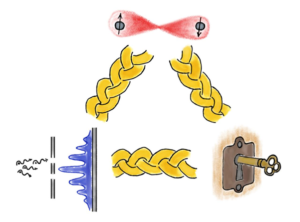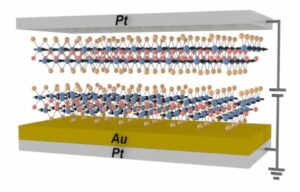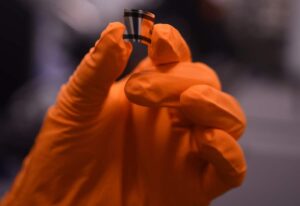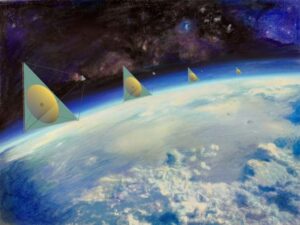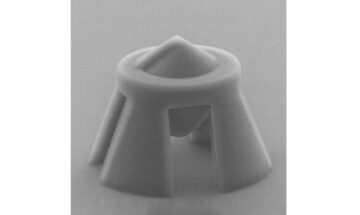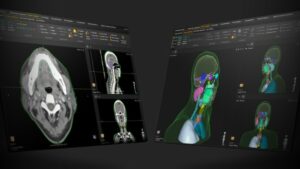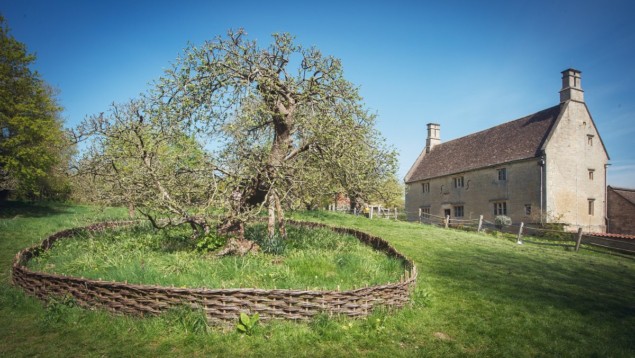
Do you fancy getting your hands on a descendant of the very tree that inspired Sir Isaac Newton to come up with his theory of gravity? The Times reported this week that the National Trust is working with the UK’s Blue Diamond garden centres to auction 10 saplings that have been propagated from the tree in Woolsthorpe Manor, Lincolnshire.
Newton was born at Woolsthorpe in 1642 and returned there from Cambridge during the plague years of the 1660s. It was then that he apparently came up with his theory of gravity after seeing an apple fall from the tree, which is believed to be 350–400 years old.
The Times says that applications to express an interest in owning one of the saplings can be made next month at the RHS Chelsea Flower Show. The National Trust, which looks after the manor house, will apparently receive at least a quarter of the money raised from the sale. The auction is expected to be held later this year and the money will be allocated to Woolsthorpe and other garden conservation projects.
Brazil nut effect
If you buy your mixed nuts in a can or box you may have noticed that the largest nuts will usually be at the top when you open the container. This phenomenon is called the Brazil nut effect because these nuts are usually the largest in a mixture.
The phenomenon is caused by the shaking of the container during transportation. The standard explanation is that smaller nuts can easily fall between gaps between larger nuts, while the larger nuts cannot fall through gaps between smaller nuts. So the smaller nuts migrate to the bottom of the can, while the larger Brazil nuts rise to the top.
This is an example of granular convection – whereby granular materials flow and separate in response to an external energy source such as shaking. This is an active area of research because the separation of aggregates is relevant to the processing of granular systems ranging from foods to construction materials. This has led to the discovery of a rich set of behaviours, including the reverse Brazil nut effect.
Charged colloidal particles
Now, researchers in the Netherlands and Poland have identified a Brazil nut effect that does not rely on an external source of energy. They looked at electrically-charged plastic particles of different microscopic sizes that were dissolved in an organic solvent. They did not shake this mixture, but rather watched through a microscope as the particles were buffeted about by collisions with solvent molecules – a process called Brownian motion. They found that the larger particles rose to top of the solution, but for very different reasons than in the conventional Brazil nut effect.
In a paper in PNAS, the researchers explain that larger particles in the solution hold more electrical charge, so they feel greater repulsive forces than the smaller particles. This, according to the researchers, allows the larger particles to rise up in the mixture – while the smaller particles cannot do so.
The team believes that the discovery could provide useful insights in fields such as geology and soft matter physics and could also be used to create more stable inks and paints.
- SEO Powered Content & PR Distribution. Get Amplified Today.
- Platoblockchain. Web3 Metaverse Intelligence. Knowledge Amplified. Access Here.
- Minting the Future w Adryenn Ashley. Access Here.
- Source: https://physicsworld.com/a/newtons-apple-trees-for-sale-brazil-nut-effect-without-shaking/
- :has
- :is
- :not
- $UP
- 10
- a
- About
- According
- active
- After
- allocated
- allows
- also
- an
- and
- Apple
- applications
- ARE
- AREA
- AS
- At
- Auction
- background
- BE
- because
- been
- behaviours
- believed
- believes
- between
- Blue
- born
- Bottom
- Box
- Brazil
- but
- buy
- by
- called
- cambridge
- CAN
- cannot
- caused
- charge
- come
- CONSERVATION
- construction
- Container
- conventional
- could
- create
- Diamond
- DID
- different
- discovery
- during
- easily
- effect
- energy
- example
- expected
- Explain
- explanation
- express
- external
- Fall
- Fields
- flow
- flower
- foods
- For
- Forces
- found
- from
- Garden
- getting
- gravity
- greater
- Hands
- Have
- he
- Held
- hold
- House
- HTTPS
- identified
- image
- in
- Including
- information
- insights
- inspired
- interest
- issue
- IT
- jpg
- larger
- largest
- Led
- looked
- LOOKS
- made
- materials
- Matter
- max-width
- May..
- Microscope
- migrate
- mixed
- mixture
- money
- Month
- more
- motion
- National
- Netherlands
- Newton
- next
- of
- Old
- on
- ONE
- open
- or
- organic
- original
- Other
- phenomenon
- Physics
- Plague
- plastic
- plato
- Plato Data Intelligence
- PlatoData
- Poland
- process
- processing
- projects
- provide
- Quarter
- raised
- ranging
- rather
- reasons
- receive
- relevant
- Reported
- research
- researchers
- response
- reverse
- Rich
- Rise
- ROSE
- sale
- says
- seeing
- separate
- set
- show
- Sir
- sizes
- smaller
- So
- Soft
- solution
- Source
- stable
- standard
- such
- Systems
- team
- than
- that
- The
- the Netherlands
- There.
- These
- they
- this
- this week
- this year
- Through
- thumbnail
- to
- top
- transportation
- Trees
- true
- Trust
- used
- usually
- was
- week
- were
- What
- What is
- which
- while
- will
- with
- without
- working
- year
- years
- you
- Your
- zephyrnet

